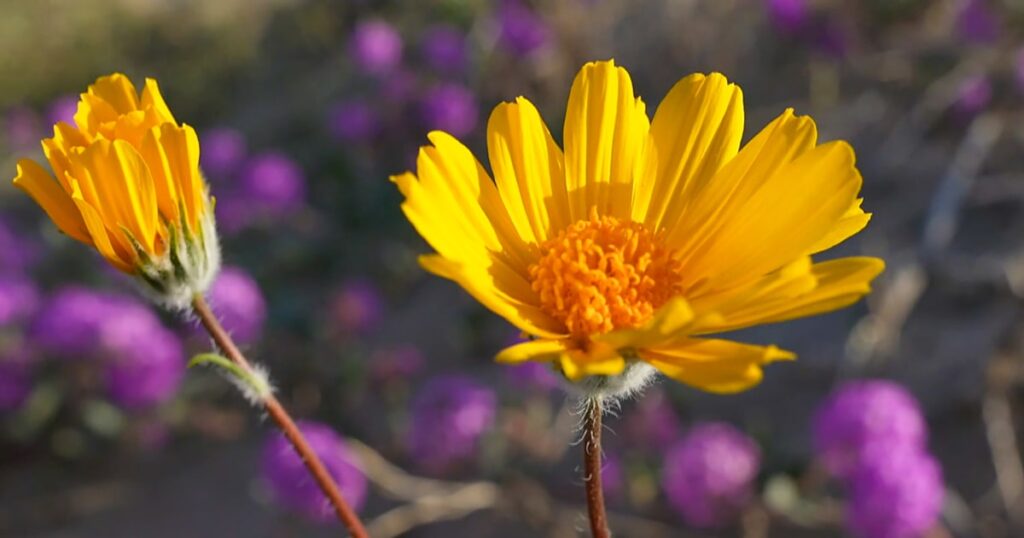Technically, a superbloom is a relatively rare event in which an inordinately high number of dormant wildflower seeds bloom at once. But don’t try telling visitors to the park that what’s already happening is anything less than magical.
“Never in my life would have thought there would be this many flowers in the desert,” said Chandini Sharma, who clutched her iPhone while FaceTiming a friend in India. “She was like, ‘Is this a flower show?’ And I was like, ‘No, no, no, this is a desert. This is a bonafide desert.’”
Vibrant hues of purple, yellow and orange sparkle across the desert floor, with the desert lily, primrose, phacelia and wooly sunflower already putting on a show.
Sharma flew from Oklahoma to see the spring bloom at Anza-Borrego after hearing about it just last week.
“It’s not a superbloom, but it’s pretty darn good for me. I’m happy with this,” she said. “When I got in there, the first thing I said was, ‘If I die and go to heaven, I’ll be OK right now.’ It was literally that kind of a moment.”
Anza-Borrego is one of several landmark sites known for potentially spectacular wildflower blooms. In previous years the excitement has pushed so many visitors to places like Walker Canyon that officials in Lake Elsinore, California, closed roads and pushed visitors to use shuttle buses, while also contending with reports of trampled flowers as shutterbugs sought the most Instagram-worthy shots.
While the crowds have frustrated some, the folks at the Theodore Payne Foundation see an opportunity — teaching Southern Californians and visitors about the amazing ecology of a region close to home. The foundation is a nonprofit organization dedicated to the education, preservation and use of California native wildflowers and plants.
Now in its 41st year, the foundation’s “Wild Flower Hotline” is a bit of old-world charm that delivers very up-to-date lessons on what is blooming and where. And while it does highlight the…
Read the full article here





